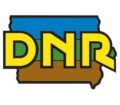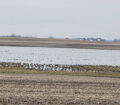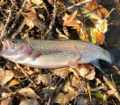By Steve Weisman
A program that doesn’t get enough credit for the benefits that come from it is the Resource Enhancement and Protection (REAP) program. Since its beginning in 1989, REAP has helped fund the protection of Iowa’s beautiful and important resources. Each year REAP funds these areas:
- Clean water and places for healthy outdoor recreation
- Saving crucial topsoil and helping wildlife flourish
- Educating Iowans of all ages on conservation essentials
- Allowing communities to protect their cultural treasures
Funding is dependent on the Iowa legislature. Full funding would be $20 million per
year, but it is usually significantly less than that. This year it was funded at $12 million. In a positive step, the Iowa legislators this year approved a two-year extension, pushing back the sunset of the REAP program until 2023. For 2021, $12 million has been allocated.
REAP is funded from the state’s Environment First Fund (Iowa gaming receipts) and from the sale of the natural resource license plates. REAP funds are allocated to each county annually based on population.
I found the following information from the Iowa DNR and the Iowa Natural Heritage Foundation about the significance of the REAP program.
REAP Formula
There is a formula designed to determine REAP fund allocations. The first $350,000 each year goes to Conservation Education (CEP). A five-member board implements the CEP distribution of funds. Another one percent of the balance goes for DNR Administration. Here is how the rest of the funding is allocated to each county:
- Roadside Vegetation – 3%
- Historical Resources – 5%
- State Land Management – 9%
- City Parks and Open Space – 15%
- Soil and Water Enhancement – 20%
- County Conservation – 20%
- State Open Space – 28%
In other words, each county receives their REAP funding divided into the above percentages based on their population. They can then determine how these funds are to be used.
REAP funds are often combined with other forms of funding to create additional money.. Ultimately, this funding provides outdoor options that may not be possible otherwise due to cost or scale of the projects.
With nearly 14,000 projects since 1989 totaling over $318,000,000 – REAP has had a positive impact on every single county. Most counties have more than 100 conservation and cultural projects that have been helped by the REAP program in the last 31 years. County conservation boards are one of the major recipients of the REAP funding. Many of the land protection projects that have occurred over the years would not have happened without the REAP program.
A DNR site (iowadnr.gov/conservation/reap/projects-by-county) provides a listing by county of the total REAP funding from 1989-2020.
As noted earlier, the REAP formula makes certain that funds are allocated in seven areas: roadside vegetation, historical resources, state land management, city parks and open space, soil and water enhancement county conservation and state open space. Without the REAP funding in both Clay and Dickinson counties, these projects might have been delayed or maybe never completed.
Anna Gray, policy director for the Iowa Natural Heritage Foundation, discusses REAP’s successes across the state of Iowa and what still needs to be done. “REAP has proven to be an incredibly effective and impactful program. The legislative extension of REAP is laudable and an acknowledgement the program’s success. However, REAP’s full potential has yet to be seen due to limited funding.”
What can be done
The good news is this. More can be done and the opportunity is right there. Gray notes, “Fortunately, there is an opportunity for the legislature to bolster REAP through the Natural Resources & Outdoor Recreation Trust Fund.”
The Trust Fund was created by voters in 2010 as a constitutionally protected source of funding for conservation programs, but it requires the legislature to raise the sales tax at least 3/8 cent to generate funding. Once funded, the Trust Fund would fully fund REAP and provide millions of dollars to programs including state recreational trails, local conservation partnerships, and lake restoration.
Gray adds, “This year, Governor Reynolds took the lead in making conservation a priority by introducing the Invest in Iowa Act, a proposal to fund the Trust Fund and repeal the REAP sunset. The unforeseen circumstances of COVID-19 put the Invest in Iowa Act on hold for the 2020 legislative session. Yet, the importance of nature has only grown during this challenging time, providing a safe place to maintain physical and mental health—further emphasizing the value of REAP and the need to fund the Natural Resources and Outdoor Recreation Trust Fund.”
My thoughts
As a former county conservation board member in Emmet County for many years, I can attest to the importance of REAP funding. Many projects were completed through the use of the REAP funding. Unfortunately, even though the original funding limit was to be $20,000,000 yearly, most often the funding has fallen significantly short. Currently, funding is $12,000,000 or 60 percent of the maximum.
I concur with many Iowans who want to see the funding of the Natural Resources and Outdoor Recreation Trust Fund. COVID shut that down during this year’s session, but I am hoping it will be revisited and funded as the coronavirus is finally (hopefully) brought under control. Nature/Iowa’s natural resources has been great therapy for many of us, showing just how important our natural resources are to us. Let’s make the funding happen!
















